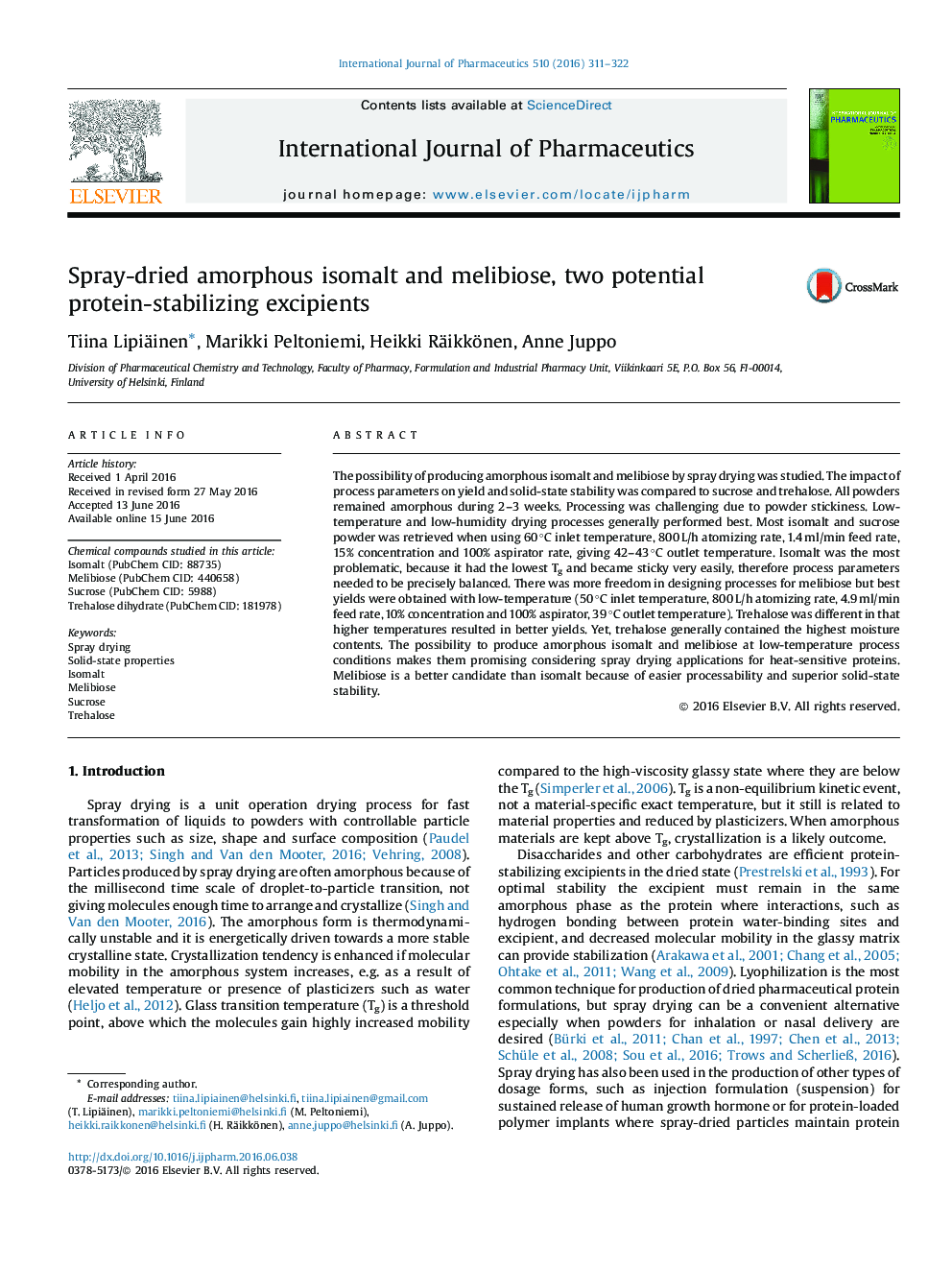| Article ID | Journal | Published Year | Pages | File Type |
|---|---|---|---|---|
| 2500828 | International Journal of Pharmaceutics | 2016 | 12 Pages |
The possibility of producing amorphous isomalt and melibiose by spray drying was studied. The impact of process parameters on yield and solid-state stability was compared to sucrose and trehalose. All powders remained amorphous during 2–3 weeks. Processing was challenging due to powder stickiness. Low-temperature and low-humidity drying processes generally performed best. Most isomalt and sucrose powder was retrieved when using 60 °C inlet temperature, 800 L/h atomizing rate, 1.4 ml/min feed rate, 15% concentration and 100% aspirator rate, giving 42–43 °C outlet temperature. Isomalt was the most problematic, because it had the lowest Tg and became sticky very easily, therefore process parameters needed to be precisely balanced. There was more freedom in designing processes for melibiose but best yields were obtained with low-temperature (50 °C inlet temperature, 800 L/h atomizing rate, 4.9 ml/min feed rate, 10% concentration and 100% aspirator, 39 °C outlet temperature). Trehalose was different in that higher temperatures resulted in better yields. Yet, trehalose generally contained the highest moisture contents. The possibility to produce amorphous isomalt and melibiose at low-temperature process conditions makes them promising considering spray drying applications for heat-sensitive proteins. Melibiose is a better candidate than isomalt because of easier processability and superior solid-state stability.
Graphical abstractFigure optionsDownload full-size imageDownload high-quality image (206 K)Download as PowerPoint slide
